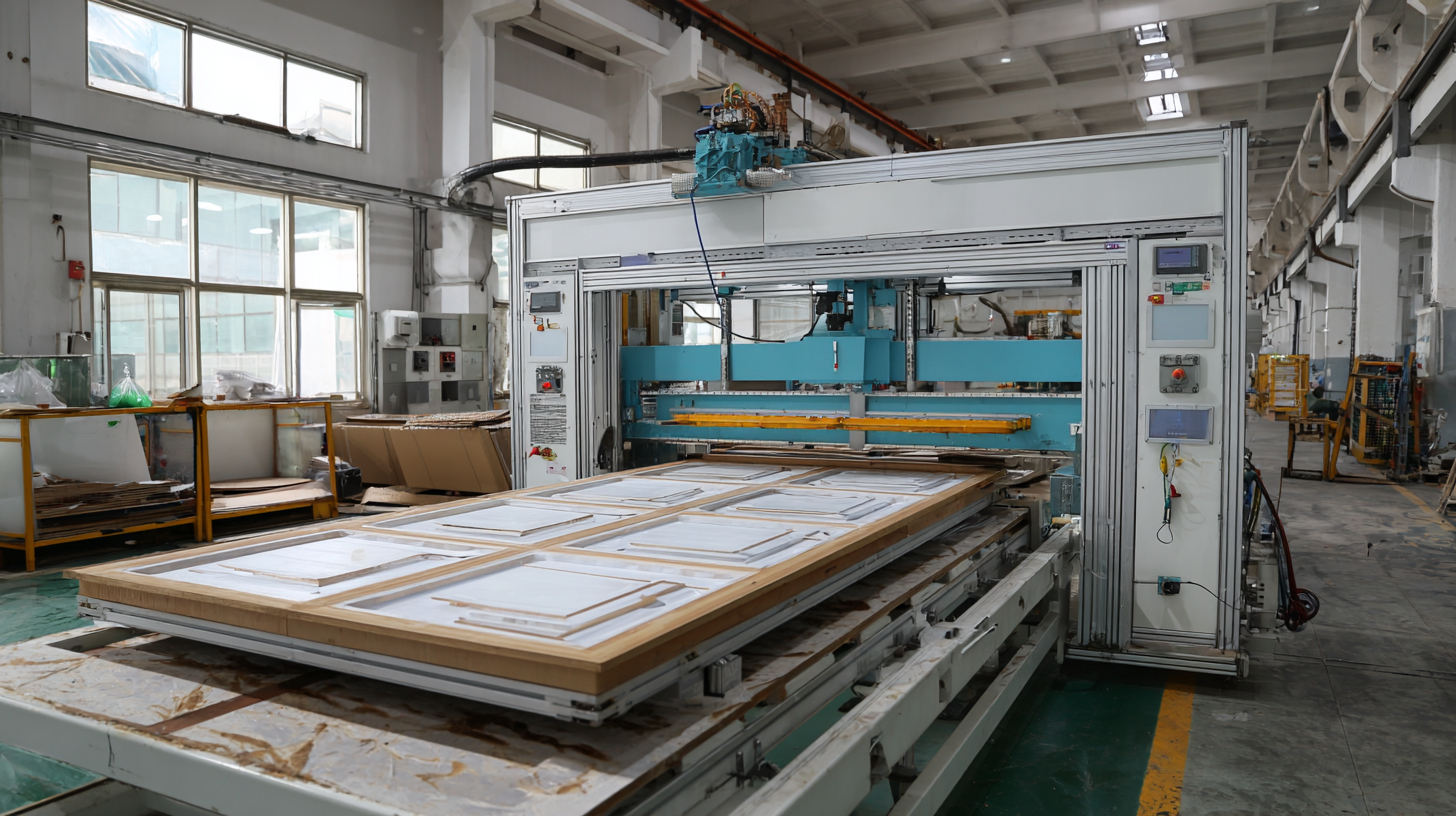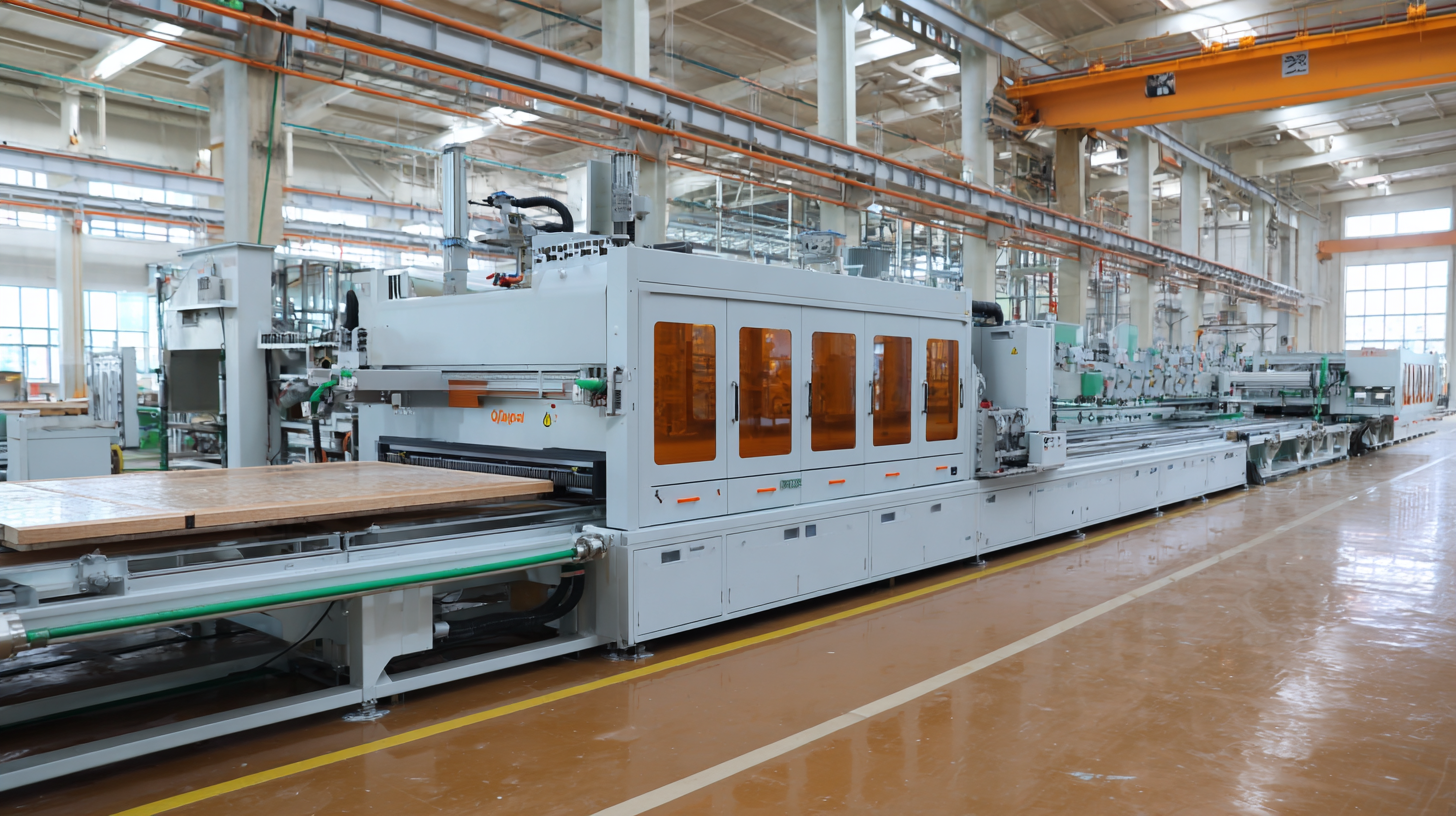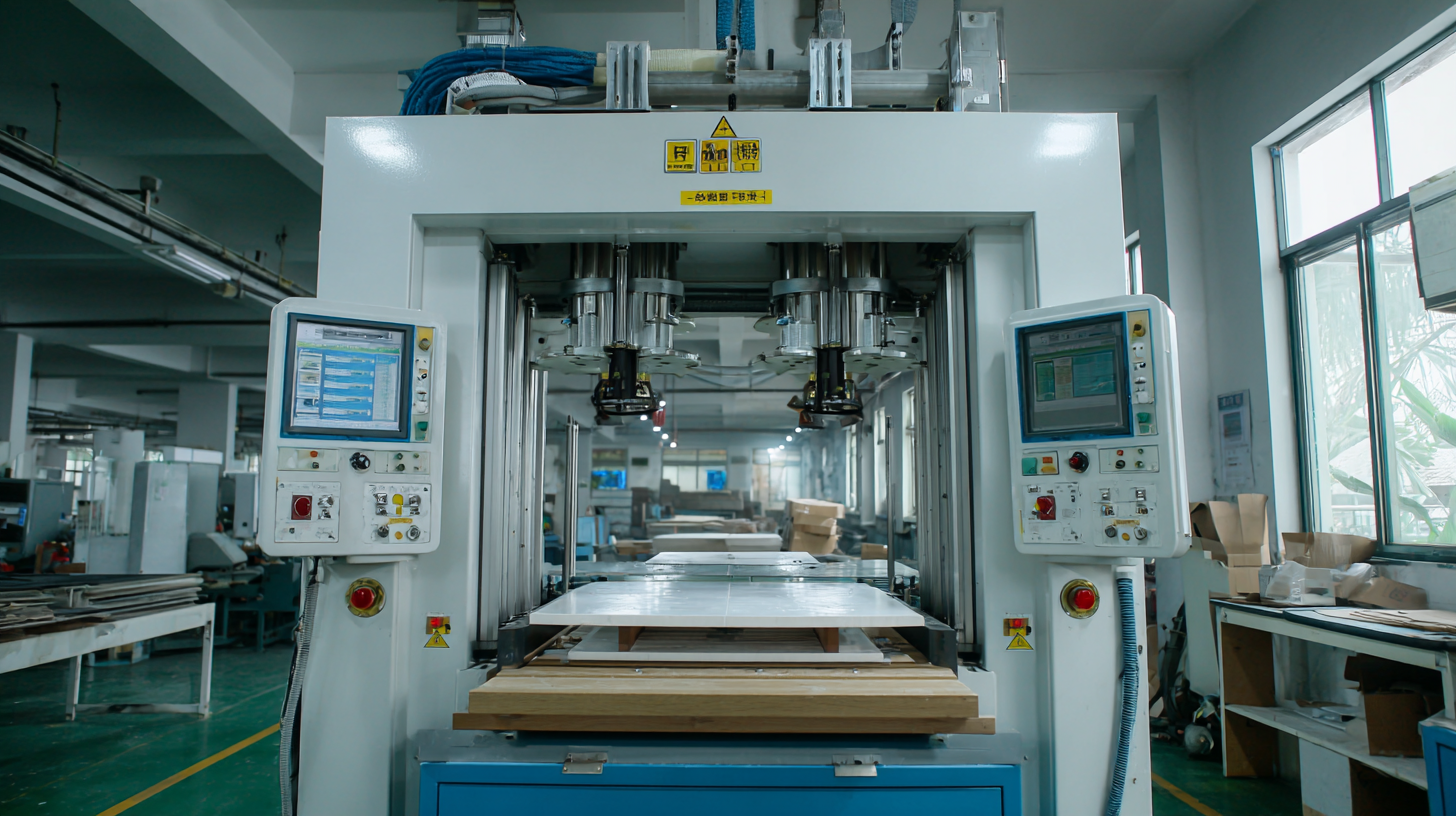
Challenges Faced When Operating the Best PVC Cabinet Door Vacuum Membrane Press Machine
In the rapidly evolving landscape of furniture manufacturing, the PVC Cabinet Door Vacuum Membrane Press Machine has emerged as a pivotal tool, streamlining the production of high-quality cabinet doors. However, operating this sophisticated equipment comes with its own set of challenges that industry professionals must navigate to fully capitalize on its capabilities. As we look ahead to 2025, understanding these challenges is crucial for manufacturers striving for efficiency and excellence. Factors such as maintaining optimal temperature control, ensuring material compatibility, and managing production timelines are just a few hurdles that can impact the overall output. This blog will delve into these pressing issues, offering insights and strategies to enhance the operational effectiveness of PVC Cabinet Door Vacuum Membrane Press Machines in the coming years.

Identifying Key Features of Quality PVC Cabinet Door Vacuum Membrane Press Machines
When selecting a quality PVC cabinet door vacuum membrane press machine, several key features can significantly enhance production efficiency and product quality. According to a report by the Wood Machinery Manufacturers of America, the right press machine should offer precise temperature control, maintaining temperatures within a ±1°C range to avoid issues such as delamination or poor adherence of PVC films to substrates. Additionally, machines that feature programmable pressure settings allow operators to adjust parameters based on material thickness, which is crucial for achieving a flawless finish.
Tips: Always look for machines that provide excellent vacuum efficiency. A vacuum pressure of at least 0.8 Bar is recommended to ensure that the PVC conforms well to the contour of the door, preventing wrinkles or bubbles. Furthermore, investing in a model with a digital control panel can significantly streamline operations, as it allows for easy adjustments and monitoring of the machine's performance.
Another important aspect is the size of the working area. Research indicates that machines with larger platens can accommodate a wider variety of cabinet door sizes, increasing versatility and potential output. Models equipped with automatic loading and unloading systems can further reduce labor costs and improve workflow. Thus, choosing a machine with these capabilities can lead to enhanced productivity and better overall results in your cabinet manufacturing process.

Understanding Supplier Credentials and Market Reputation
When investing in a PVC cabinet door vacuum membrane press machine, understanding supplier credentials and market reputation is crucial. A good supplier should have a solid track record in the industry, showcasing their experience through years of operations and a portfolio of satisfied clients. Evaluating their credentials involves looking at certifications, customer testimonials, and case studies that highlight their expertise. A trustworthy supplier typically provides detailed information about their products' performance and reliability, allowing buyers to make informed decisions.

Moreover, the market reputation of a supplier significantly affects the overall experience of operating the machine. Companies with a positive reputation often have a dedicated support team, ready to assist with installation, maintenance, and troubleshooting. Checking online reviews and industry forums can provide insights into other users' experiences, highlighting any common issues or exceptional service provided by the supplier. By focusing on these aspects, buyers can mitigate risks and ensure that they are investing in a high-quality machine that meets their operational needs effectively.
Evaluating Technical Support and After-Sales Service
When investing in a PVC cabinet door vacuum membrane press machine, the importance of robust technical support and after-sales service cannot be overstated. A recent industry report highlighted that over 70% of businesses encountered operational challenges due to inadequate support from equipment suppliers. This lack of assistance can lead to prolonged downtime, which directly impacts productivity and revenue. Ensuring that your machine is backed by knowledgeable technicians who can provide timely solutions is crucial for maintaining efficient operations.
Furthermore, the availability of after-sales service is a significant factor influencing overall customer satisfaction. According to data from a leading market research firm, companies with strong after-sales support reported a 45% higher satisfaction rate among users of PVC membrane presses. This includes not only technical guidance during installation but also ongoing maintenance and prompt response to service requests. In an industry where precision and efficiency are paramount, having reliable support can make a considerable difference in maximizing the longevity and performance of your vacuum membrane press machine.
Assessing Pricing Models and Value for Money in Supplier Offers
When operating a PVC cabinet door vacuum membrane press machine, navigating the complexities of pricing models and value for money can be daunting. According to a recent market analysis, the average cost of these machines ranges from $10,000 to $30,000, influenced by factors such as brand reputation, machine capabilities, and additional features. Understanding the nuances in pricing structures offered by different suppliers can help businesses make more informed purchasing decisions.
Tip: Always request detailed quotes from multiple suppliers. This should include not only machine prices but also potential maintenance costs and offers for after-sales support, which can significantly impact the overall value.
When assessing supplier offers, it's crucial to evaluate the total cost of ownership rather than just the initial purchase price. Research indicates that companies that consider lifecycle costs can save up to 15% over the equipment's lifespan. Features like energy efficiency, ease of operation, and reliability play a key role in determining long-term savings.
Tip: Look for user reviews and case studies showcasing real-world performance. Understanding how other businesses have fared with the same machine can provide invaluable insights into the true value and operational efficiency of the equipment.
Industry Trends: Innovations Impacting PVC Cabinet Door Production
The production of PVC cabinet doors has witnessed significant transformations due to innovations in technology. One of the most groundbreaking developments is the introduction of advanced vacuum membrane press machines. These machines enhance efficiency and precision, enabling manufacturers to achieve seamless finishes and superior designs. The shift towards automation has also led to reduced labor costs and increased production speed, making it easier for companies to meet market demands while minimizing waste.
Moreover, industry trends emphasize sustainability and eco-friendliness in PVC cabinet door production. Manufacturers are increasingly adopting materials that have lower environmental impacts, while advanced machinery incorporates energy-efficient processes. Innovations such as digital printing have also emerged, allowing for customized designs that cater to consumer preferences. This shift towards personalization, coupled with sustainable practices, not only enhances product appeal but also aligns with the growing demand for environmentally responsible manufacturing solutions. As these trends evolve, they will continue to shape the future of PVC cabinetry, driving businesses to adapt and thrive in a competitive landscape.
